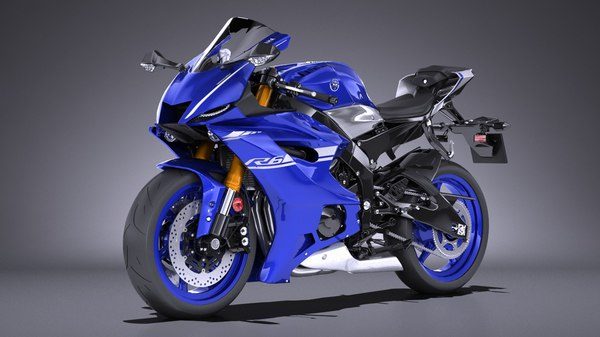Table of Contents:
An increasingly common sight in Berlin and other German cities are electric delivery bikes gliding along bike lanes like parcel-laden sailboats in designated Amazon rounds. German manufacturer Schaeffler sees this as an opportunity: it is introducing a new generator at the heart of an intelligent drive train concept that some observers are calling bike-by-wire.
At first glance, this is complicating the bike, which is rather a fairly simple device. But if you look at the novelty of the CAN bus-based solution, even the aerospace industry is benefiting from it. Let’s go back to the roots for a moment.
Advantages of a classical education
In the 1970s, petrol cars drove proudly in Poland and other Eastern Bloc countries, where the electrical equipment consisted of a starter, an ignition system, an oil pressure sensor, a liquid temperature sensor, several others and a tachometer.
However, the development of car electrics was very fast, the components were getting smaller, cheaper and more efficient, and if all the new devices were connected to each other by electrical wires, it would create a huge tangle of cables.

At the time, few people anticipated such great advances in electrical and electronic engineering, but engineers were aware that there were bound to be more and more of these things, and thanks to the advantages of a classical education, they were certainly able to predict general developments. Technological innovations such as ABS and electronic interlocks could only increase. The number of necessary cables had to grow with them. The German entrepreneur Robert Bosch and his company gave the world a visionary treat.
New communication standards
Work on the CAN bus began in 1983 at Robert Bosch GmbH. The protocol was officially presented in 1986. The first CAN chips were introduced by Intel in 1987, with Philips joining soon after.
1991 Mercedes-Benz W140 was the first production vehicle to use a CAN-based multiplexed wiring system. Bosch is still actively working on extending CAN standards.

In 2012, it published CAN FD 1.0, or CAN with Flexible Data-Rate. The specification uses a different frame format that allows for different data lengths, as well as optional switching to a faster baud rate when an arbitration decision is made. Compatibility has been taken care of as CAN FD is compatible with existing CAN 2.0 networks, so new CAN FD devices can interoperate on the same network. CAN bus is also one of the protocols used in the on-board diagnostics standard OBD-II and the mandatory issues also apply to EU countries.
What is a CAN bus?
The main application area of CAN bus is automotive electronics. CAN is a multi-master serial bus standard for connecting electronic control units (ECUs) also called nodes. Two or more nodes are required to communicate on a CAN network. A node can connect to devices ranging from simple digital logic, e.g. PLD (programmable logic device), through FPGA (field-programmable gate array) to embedded computers with extensive software. Such a computer can also be a gateway allowing a general purpose computer (like a laptop) to communicate via USB or Ethernet with devices in the CAN network.
CAN bus applications:
- Passenger vehicles, trucks, buses (gasoline and electric).
- Agricultural equipment.
- Electronic equipment for aviation and navigation.
- Industrial automation and mechanical control.
- Elevators and escalators.
- Building automation.
- Medical instruments and equipment.
- Pedelecs (a type of electric bicycles).
- Model railroads.
- Watercraft (narrowing the definition).
- Lighting control systems.

From cars to motorcycles
Let’s stop at applications friendly to anyone who owns a bike and can ride it. CAN is the answer to the development of electronic components in cars and their increasing number. Since it provides communication between devices without the need for meters of wires, we might as well do away with the bike chain thanks to these buses. Why? Because on board a vehicle equipped with CAN bus as a control unit, everything sends messages to each other, for example, one device asks another if it can already start working.
The pioneering ride-by-wire technology used on the 2006 model of the Yamaha YZF-R6 motorcycle was part of a major upgrade by the Japanese manufacturer that also included new engine management controls. It eliminates the mechanical connection between the accelerator pedal and the throttle. The physical connection is replaced by sensors connected by wires that decide how much of the fuel-air mixture should enter the motorcycle’s engine.

CAN bus in bicycle, or ride-by-wire
Networked, flexible, durable and environmentally friendly. New trends in mobility place high demands on products and technology. At the Eurobike 2021 in Friedrichshafen, German automotive and industrial supplier Schaeffler presented its new bike-by-wire Free Drive system as an innovative solution for bicycles. By the way, the name Eurobike is worth remembering – it is the annual breath of fresh air in the bicycle industry held in Friedrichshafen, Germany.
The chainless drive system allows for completely new bike architectures and, following the example of cars, less need for wear parts. The e-bike market is growing steadily, and Schaeffler already has many years of experience in the e-bike segment and recently in 2016 presented the mechatronic VELOMATIC automatic shifting system – an automatic bicycle derailleur handlebar. Okay, back on CAN.

The centerpiece of the Free Drive system is a generator that applies a constant resistance to the pedal and simultaneously absorbs the cyclist’s pedaling force. The regenerative solution is a series hybrid drive that converts the mechanical energy generated by pedalling into electrical energy. This in turn is converted back into mechanical energy in the motor in the wheel hub. Excess energy is stored in a battery. It’s nothing new, but just like in cars, all system components communicate with each other via a CAN connection. The complete, optimally matched system generates a continuous power of 250 watts and consists of a pedal generator, drive motor, powerpack battery and the so-called human-machine interface (HMI).
New opportunities
What’s new? Whether the system is used in two-, three- or four-wheeled applications, the lack of a mechanical connection between the generator and the motor means that Free Drive can provide maximum flexibility to the bike’s architecture and a freely customizable pedaling feel that is tailored to the requirements of the bike and the needs of the rider. At the same time, it ensures minimal wear and tear on parts. The compact dimensions of the Free Drive system allow the standard millimetre distance between two pedals to be maintained. Besides, the Free Drive system can be adapted to different applications, regardless of the manufacturer. Perhaps a similar boom in electric and electronic add-ons will also occur in the bicycle industry, just as has happened in the history of passenger cars and motorcycles.
Then we’ll definitely be happy with CAN bus, because we won’t have to take care of dozens of wires and worry about snagging one and breaking it. We don’t feel up to discussing CAN bus applications in the aerospace industry today, but there the benefit of reducing the use of wires must be felt even more – an example is the Airbus A380, where the controller is an integral part of the control panel (ICP). Let’s also remember that less wiring means less copper and less plastic, and less hassle in general.
How useful was this post?
Click on a star to rate it!
Average rating 0 / 5. Vote count: 0
No votes so far! Be the first to rate this post.



















